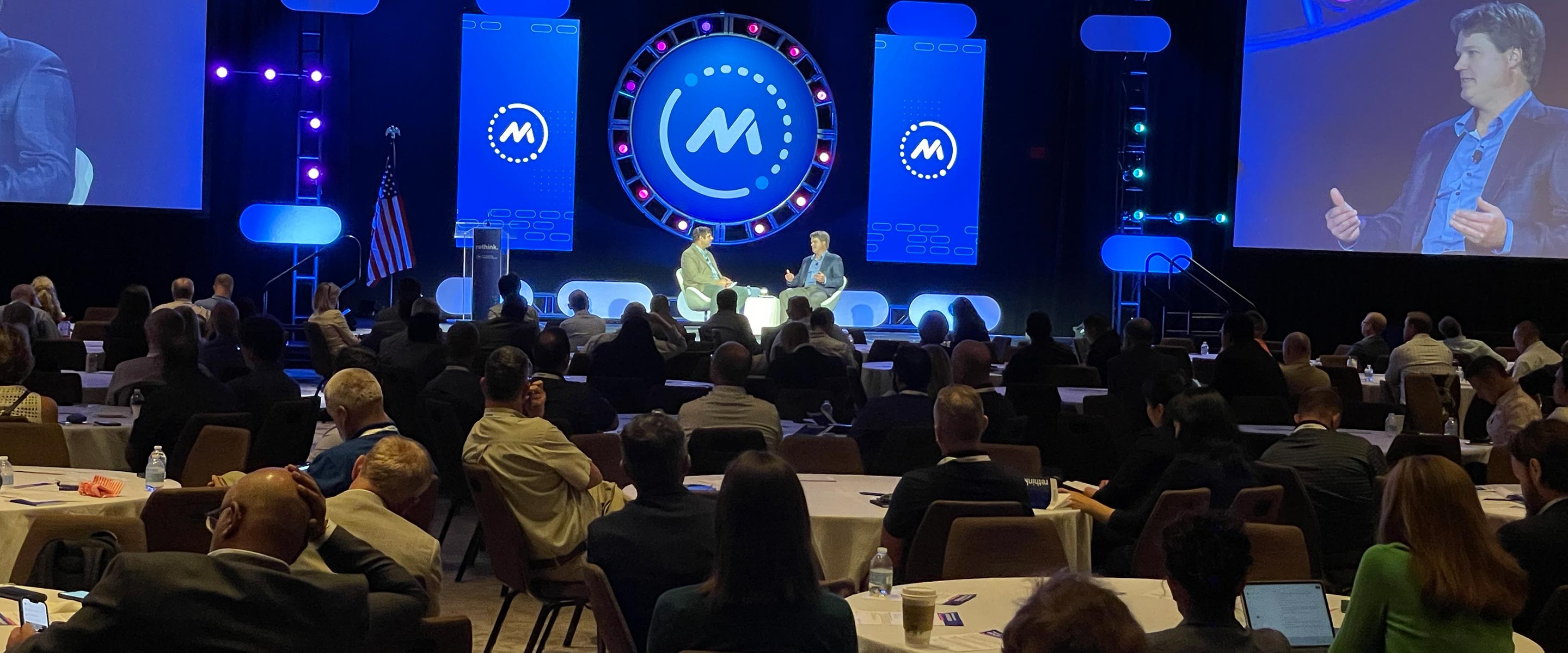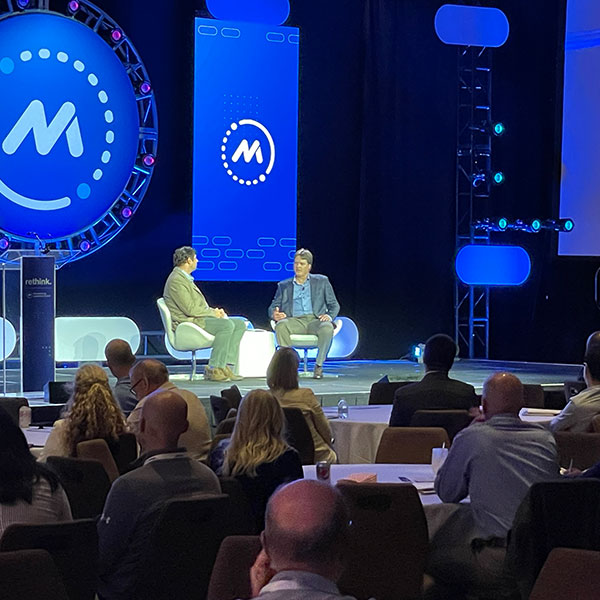Creating a Cross-Functional Digital Environment with Mike Lashbrook
Posted: July 17, 2023

Today’s manufacturing companies are facing many challenges as the industry increases its efforts to industry 4.0 and the digital transformation. This year’s Rethink conference highlighted ways in which companies like yours can create a digital manufacturing environment. But you may be wondering: “Why is digital manufacturing important to my company?” or “What should I think about before deciding if my organization is ready for a digital transformation?” or “How do I even begin a digital transformation?”
In his conversation with Jeff Puma, the Content Director for the Manufacturing Leadership Council, Mike Lashbrook, our Vice President of Digital Solutions broke down ways leaders can start to answer these questions. The biggest takeaway? Building a cross-functional environment in your manufacturing space will make your company’s digital transformation a success.
Here are some other key takeaways from Mike and Jeff’s conversation.
Organizational Readiness and Cross-Functional Development
While it is essential to gain buy-in from key leadership and all affected departments in your company, manufacturing operations need to lead the charge. Many companies think readiness for a digital transformation starts with IT. Yes, IT is key to making the transformation successful and possible, but manufacturing teams need to be the champion of it and fully bought on transforming from a fully manual manufacturing environment to a semi or fully digital space.
“We believe digital transformations have to be led by manufacturing operations,” Mike said. “At the end of the day, manufacturing operations is the one that understands the floor. They understand the problems that the floor is having, and they really know how to drive value into their operations and how to solve the problems.”
Support from the human resources team can also be extremely valuable to help bridge the gap between different age brackets and generations. While younger generations bring in new experience and skills, it is essential to utilize the institutional knowledge of people with decades of manufacturing floor experience. Technology can cause fear in people, and human resources can assist with communicating why innovative technology has been brought in and how it can benefit people’s lives and jobs.
The Importance of Data in Decision Making
Data is a huge aspect of a successful digital transformation, there needs to be a single source of data. But having access to all the information can be overwhelming, that is one of the reasons it is important to think about and decide what is the right data. Data can be a balancing act. Providing too much data to certain roles is unnecessary; but not providing enough raw data will make it hard for people to make their own conclusions and solve problems.

“It is really thinking through any user of data’s standardized work or the work they need to do,” Mike said. “And then designing personas so that they get the data that is usable for them. I think that is just thinking upfront from a user perspective, whether it is an operator, a team leader, a quality leader, or a maintenance leader. And thinking through what data do I need to make available for them? And then based on the personas you design and your system, getting the correct data in their hands.”
Mike and Jeff talked about wearables on the manufacturing floors and showing operators why it is valuable to wear the data providing devices. JR Automation is working through how wearables can be incorporated on an operator, and how this data can be useful to standardize an operator's work, as well as continuous improvement activities within an organization.
Generational Shifts in the Workforce
One question that came up during the conversation revolved around different generations in the workforce on the manufacturing floor. Is there a difference between generations on the manufacturing floor and technology and how do you get them all on the same page? It can be a tough question to answer and is something JR Automation team members have talked about often.
“I think it is going to be a big challenge for us on how you now start thinking about this new workforce coming in,” Mike said. “They are extremely talented when it comes to technology, but maybe they have a different view on how they want to work. But it is our job to figure out how you make that effective. It is going to be different.”
Mike ended by sharing that companies and employees need to be more open to embracing newer technologies coming into the workforce at a quicker pace, all while making sure you are embracing it in a way that makes sure operations remain reliable and robust.
Starting a digital transformation journey can be exciting but requires a lot of thought to make it successful. Not only do you need support from your entire company, but you need to consider how different generations will handle the changes. Considering data and what aspects are most beneficial to individuals at various levels of your company will be crucial.
Contact our team of experts if you are ready to learn about a digital transformation in your manufacturing environment.





